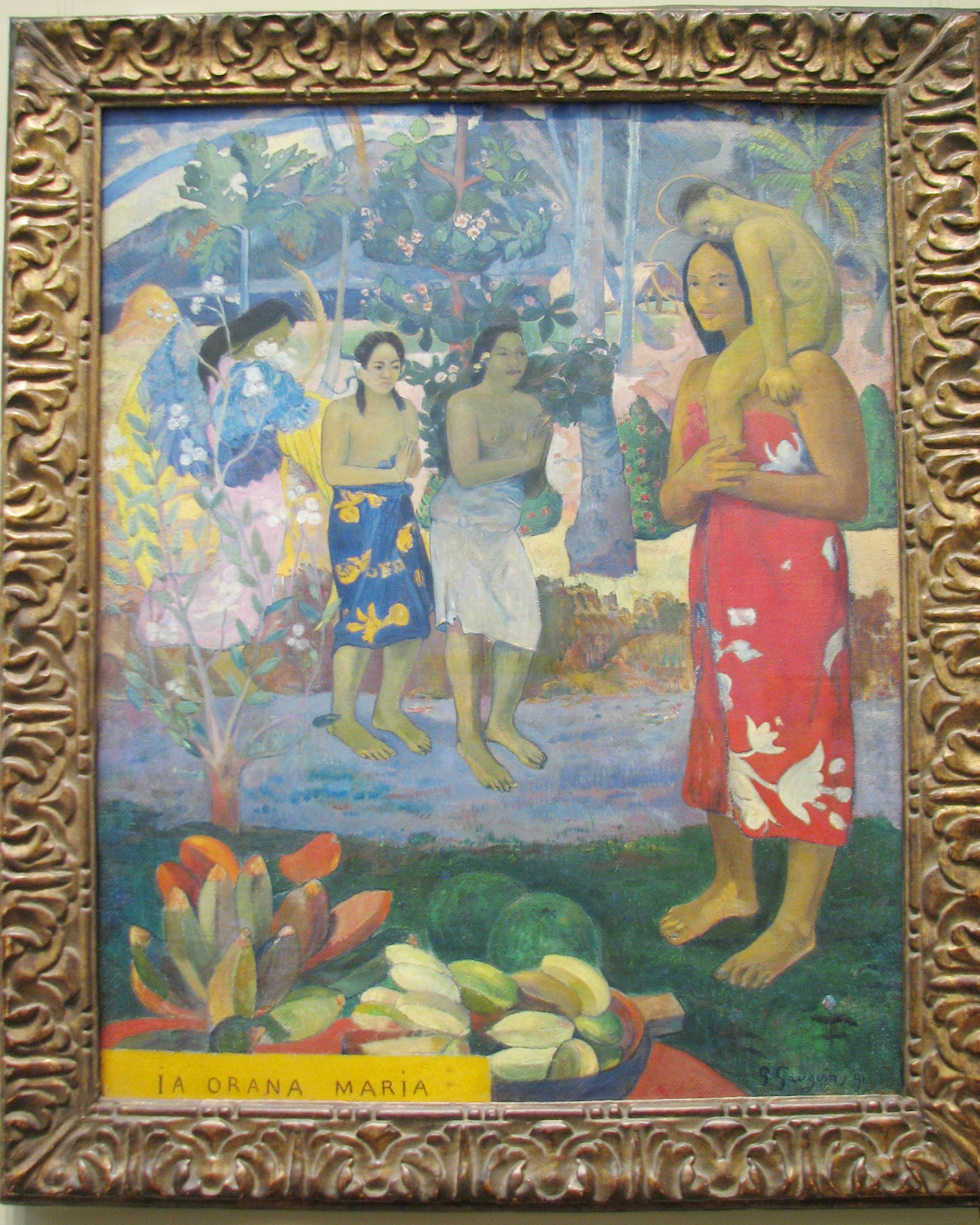
Oil on canvas, 35 x 45 3/4 in. (88.9 x 116.2 cm)
Bequest of Sam A. Lewisohn, 1951
Met museum 51.112.2
 Oil on canvas, 35 x 45 3/4 in. (88.9 x 116.2 cm) Bequest of Sam A. Lewisohn, 1951 Met museum 51.112.2 |
|
(From info card) "Before embarking on a series of pictures inspired by Polynesian religious beliefs, Gauguin devoted this, his first major Tahitian canvas, to a Christian theme, describing it in a letter of March 1892: "An angel with yellow wings reveals Mary and Jesus, both Tahitians, to two Tahitian women, nudes dressed in pareus, a sort of cotton cloth printed with flowers that can be draped from the waist. Very somber, mountainous background and flowering trees . . . a dark violet path and an emerald green foreground, with bananas on the left. I'm rather happy with it." Gauguin based much of the composition on a photograph he owned of a bas-relief in the Javanese temple of Borobudur."
(From _Gauguin_, by Belinda Thomson, pages 146-147) |


